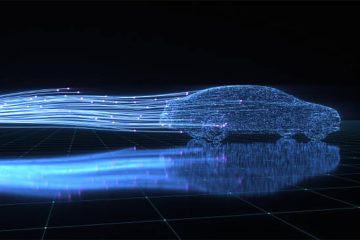The Transformational Impact of High Technologies on Automotive Development

Over the past several decades, the automotive industry has undergone a massive transformation, largely driven by the introduction of high technologies. This profound change has pervaded every aspect of automotive development, from the initial conceptualization and design stages, right through to the manufacturing process, and even extending to the way customers interact with their vehicles. High technologies encompass an array of advanced tools, techniques, and methodologies. Key among these are artificial intelligence, the Internet of Things, additive manufacturing (also known as three-dimensional printing), and autonomous driving technologies. The successful integration of these cutting-edge technologies into the automotive development process has significantly expanded the capabilities of contemporary vehicles. This has set the stage for a future where cars are smarter, more efficient, safer, and more environmentally friendly than ever before.

The Revolution of Automotive Design with High Technologies
High technologies have sparked a significant revolution in the field of automotive design. Advanced tools such as Computer-Aided Design software have allowed designers to create highly precise, detailed, and customizable blueprints. This has paved the way for bespoke vehicle models tailored to individual customer preferences. In addition to this, groundbreaking technologies like virtual reality and augmented reality have added an entirely new dimension to the design process. These technologies enable designers to visualize, simulate, and interact with three-dimensional models of their designs in a virtual environment. This helps in making more informed decisions, reducing the time and resources associated with physical prototyping, and significantly speeding up the overall design process.
High Tech Solutions in Automotive Manufacturing
High technologies have not only revolutionized the design stage but have also had a significant impact on automotive manufacturing processes. The integration of automation and robotics has greatly streamlined production lines, enhancing efficiency and ensuring stringent quality control. Furthermore, the rise of additive manufacturing, also known as three-dimensional printing, has been a game-changer. This technology enables rapid prototyping and the creation of complex, lightweight components that were previously impossible to produce using traditional manufacturing methods. The end result is significant cost savings, reduced production times, and a drastic reduction in material waste.
Role of High Technologies in Vehicle Safety
High technologies have had a significant impact on vehicle safety. The use of artificial intelligence and machine learning in Advanced Driver Assistance Systems has dramatically improved safety features. These technologies have enabled features like lane departure warnings and automatic emergency braking, significantly reducing accident rates. Additionally, technologies like Light Detection and Ranging (LiDAR) and radar sensors are propelling the development of autonomous vehicles. These advancements promise a future where driving is not just safer, but potentially completely hands-free.
Evolving Customer Experiences with High Technologies
The infusion of high technologies into the automotive industry has fundamentally changed the way customers interact with their vehicles. The advent of connected car technology, powered by the Internet of Things, has brought about vehicles that can seamlessly connect with other devices. This provides a wealth of features such as real-time traffic updates, remote diagnostics, and personalized infotainment. Furthermore, the use of artificial intelligence has enabled the development of smart voice assistants, allowing for a hands-free, interactive driving experience.
High Technologies Fueling Sustainability in the Automotive Industry
High technologies are driving the push for sustainability in the automotive industry. Electric Vehicle technology, for instance, offers a cleaner and more energy-efficient alternative to traditional internal combustion engines. Furthermore, advancements in battery technology and the integration of renewable energy sources are continually improving the efficiency and viability of electric vehicles. High technologies are also enabling the development of intelligent traffic management systems, which could significantly reduce traffic congestion and, consequently, carbon emissions.
Future Trends: Autonomous Driving and Connected Cars
Looking towards the future, high technologies like artificial intelligence, the Internet of Things, and machine learning promise exciting developments in autonomous driving and connected cars. These technologies are set to transform our streets with vehicles that can communicate with each other and the infrastructure around them, navigate independently, and make informed decisions on the go. The future of the automotive industry is on the brink of a revolution, propelled by these rapid advancements in high technologies.
Conclusion
In conclusion, the impact of high technologies on automotive development is transformative. High technologies have revolutionized every stage of vehicle development and have radically redefined the relationship between vehicles and their users. As we step further into this era of technological innovation, we can expect high technologies to continue to drive the future of the automotive industry towards unprecedented levels of efficiency, safety, and sustainability.


